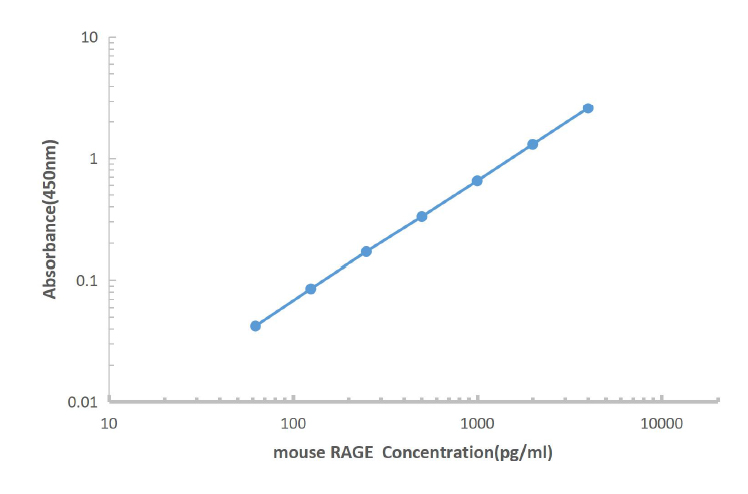Mouse MOK protein kinase (MOK) ELISA KIT (96 T)
CNY 3,200.00
货期*
3周
规格
Specifications
| Product Data | |
| Description | Mouse RAGE Immunoassay |
| Size | 96 T |
| Format | 96-well strip plate |
| Assay Type | Solid Phase Sandwich ELISA |
| Assay Length | 4 hours |
| Signal | Colorimetric |
| Curve Range | 62.5-4000pg/ml |
| Sample Type | Serum, plasma, Cell culture supernatant |
| Sample Volume | 100 uL |
| Specificity | This assay recognizes both natural and recombinant mouse RAGE. |
| Sensitivity | 30pg/mL |
| Reactivity | Mouse |
| Interference | No significant interference observed with available related molecules. |
| Components |
|
| Background | Receptor for Advanced Glycation End product (RAGE) is an approximately 50 kDa type I transmembrane glycoprotein belonging to the immunoglobulin (Ig) superfamily. RAGE plays important roles in several pathological processes including inflammation, diabetes, cancer, and Alzheimer’s disease (AD). RAGE consists of a 319 amino acid (aa) extracellular domain (ECD) with three Ig-like domains, a 21 aa transmembrane segment, and a 41 aa cytoplasmic domain. Within the ECD, mouse RAGE shares 79% and 91% aa sequence identity with human and rat RAGE, respectively. Alternative splicing of mouse RAGE generates multiple additional isoforms that are truncated at various points within the ECD or carry internal deletions. A soluble form of RAGE (sRAGE) can also be generated by metalloproteinase-mediated cleavage of the ECD. The membrane-bound fragment remaining after ECD shedding can be cleaved by gamma-secretase to release the intracellular domain. RAGE is expressed in the central nervous system (CNS) during development as well as in adult endothelial cells, smooth muscle cells, pericytes, monocytes, and neurons. RAGE binding to S100A1, EN-RAGE/S100A12, or S100B induces inflammatory immune cell adhesion and infiltration as well as vascular smooth muscle proliferation, neointimal expansion, and atherosclerotic plaque development. RAGE also cooperates with TLR9 in the B cell and dendritic cell inflammatory response to complexes of HMGB1 and CpG DNA. In cancer, RAGE binding to HMGB1, S100A8, or S100A9 promotes tumor growth and metastasis in addition to inflammatory cell infiltration. sRAGE functions as a sink for RAGE ligands and lessens the severity of these processes |
| Gene Symbol | MOK |
Documents
| Product Manuals |
Customer
Reviews
Loading...


 United States
United States
 Germany
Germany
 Japan
Japan
 United Kingdom
United Kingdom
 China
China

